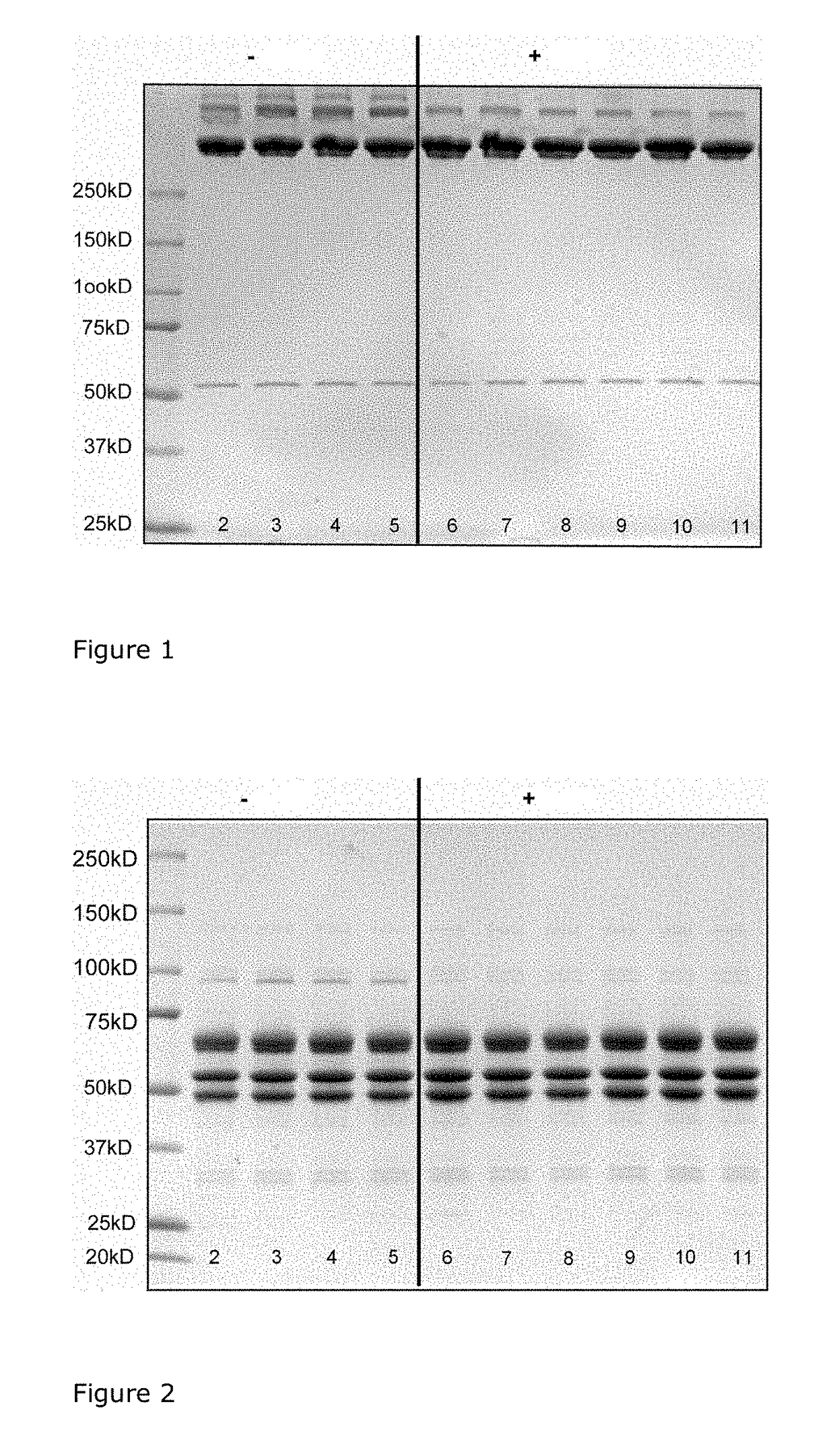Process for production of fibrinogen and fibrinogen produced thereby
a technology of fibrinogen and fibrinogen, which is applied in the field of process for producing fibrinogen and fibrinogen produced thereby, can solve the problems of eventual loss of product and plugging of filter pores, and achieve excellent yield and filterability, fast treatment, and better filterability.
- Summary
- Abstract
- Description
- Claims
- Application Information
AI Technical Summary
Benefits of technology
Problems solved by technology
Method used
Image
Examples
example i
[0067]Cryoprecipitate, produced from plasma by established methods, was reconstituted or solubilised at about neutral pH, subjected to adsorption with Al(OH)3 and the resulting gel removed by centrifugation. The supernatant was then virus inactivated by solvent / detergent (S / D) treatment. S / D compounds, according to EP-A1-0 131 740 were extracted with vegetable oil and the water-phase was contacted with Fractogel® EMD-TMAE. Chromatographic conditions (pH-value of 6.9-7.1 and an osmolality of 570-610 mosmol / l) were employed under which the fibrinogen did not bind to the gel and hence was found in the flow-through or supernatant.
[0068]The solution of unbound fibrinogen was admixed with EDTA until the EDTA concentration reached 10 mM and the EDTA containing fibrinogen solution was stirred at about 15° C. for about 60 minutes after addition of glycine (1 mol / l final concentration and pH=7.4) to precipitate fibrinogen. The fibrinogen containing precipitate was then separated by centrifuga...
PUM
| Property | Measurement | Unit |
|---|---|---|
| temperature | aaaaa | aaaaa |
| conductivity | aaaaa | aaaaa |
| conductivity | aaaaa | aaaaa |
Abstract
Description
Claims
Application Information
 Login to View More
Login to View More - R&D
- Intellectual Property
- Life Sciences
- Materials
- Tech Scout
- Unparalleled Data Quality
- Higher Quality Content
- 60% Fewer Hallucinations
Browse by: Latest US Patents, China's latest patents, Technical Efficacy Thesaurus, Application Domain, Technology Topic, Popular Technical Reports.
© 2025 PatSnap. All rights reserved.Legal|Privacy policy|Modern Slavery Act Transparency Statement|Sitemap|About US| Contact US: help@patsnap.com

